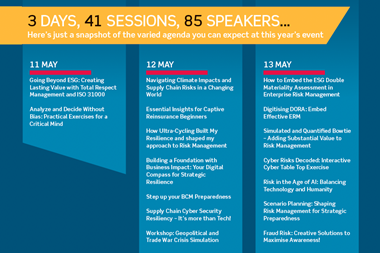The internet has not lived up to many companies' expectations. Micahel Bates looks at ways of making your e-business work.
Many people are wondering what is happening in the virtual world today. With so much media attention on high profile dot com companies losing millions or going bankrupt, it is no wonder that people are getting cold feet when it comes to embracing cbusiness.
Many of the companies that have journeyed down the information super highway have been left disillusioned. A major cause has been the misconception based on "If you build it, they will come", coupled with a lack of vision and allocation of insufficient resources. When surfing the web, it is not unusual to be inundated with electronic brochures owned by companies wondering why people are not flocking to their site and overwhelming their sales staff. Too many "dot corns" spend fortunes trying to build brands without customers, reliable delivery systems, or sought-after products.
Some of the high profile companies are having serious trouble servicing their debts. This is no wonder considering that the marketplace is laden with medium ticket items on small profit margins. Others have scaled down traditional sales and marketing avenues, thinking that sales would pour in as a result of having a web site. And some companies saw putting up electronic versions of their brochures as a safe and relatively inexpensive way to test the waters.
In short, many companies have approached the internet without carefully outlining what they want to accomplish and how they are going to go about it.
There are many considerations. What arc the costs involved, not only monetary, but also in allocated resources? Do you need your own dedicated server? Do you need a dedicated connection to an internet service provider (ISP)? Who is going to be responsible for implementing your internet strategy? Do they have the time, resources and a clear set of goals and objectives to make the project a success?
It is always a good start to see what your competition is doing. Look at direct competitors as well as complimentary sites. This will help you get ideas that can assist you in formatting your own c-business strategy. What changes if any will you have to make in the way you presently do business to accommodate these strategies? Are these strategies realistic and how will they compliment your overall business plan?
Ask the right questions
To formulate an effective e-business strategy that will offer the greatest advantage, you need to carefully examine the following areas:
A planned, phased approach allows you to identify where you want to go and to develop checkpoints to assess your progress along the way. Your ideal web site may not necessarily be practical or affordable immediately. But plan what you want to do, when you should go live with each revision of your site, and how you are going to monitor your progress.
Determining who will use your site often goes hand-inhand with identifying its goals. There can be more than one target audience. And not all your customers may necessarily be a target audience for your web site.
Hit the target
You need to categorise your target audiences, identify their needs, and develop your e-strategy to meet those needs When reviewing different web sites, it is amazing to see how many fail to do this.
For example, you might consider a good animated home page that has images moving around the screen, text fading in and out and so forth. Visually this may be appealing to some visitors and quite appropriate for some sites. But it can be counter productive if someone does not have the appropriate plug-in installed to view your site properly, or perhaps has too slow a connection for a graphically rich site. A good alternative is to place an opening page where the user can view either an animated or non-animated version of your home page or web site, as well as a text only version.
On the internet, information is king. Allow your visitors to get the information out of your site as easily and quickly as possible. Many bricks and mortar businesses have some protection by virtue of their location. If someone visits a shop, they are more likely to do business there, even if the service or selection is below average, than to leave and find another shop, perhaps miles away. On the internet, you are only a click away from your competitors so you need to make sure that you are offering up-to-date information and are mindful of customer service and support. This is commonly referred to as Quality of Experience (QoE) and should not be taken lightly.
Promotion
You have evaluated all the areas of the internet that can, and should, be incorporated in your enterprise, and have developed a totally integrated e-business system. How are you now going to get the right people using your site, to achieve the levels of activity to make your strategy successful?
Depending on your target audience, this can be very simple or extremely difficult. For example, if your e-business strategy is to automate your supply chain, and your target audience is your suppliers, informing and educating them on the use of your system should not present problems. If your target audience is your customers, it can range in complexity depending on your market sector, your current customer base and the dynamics of your customer base (how quickly it changes and how much it changes).
The hardest market to target is the general public, whether you are actually selling products, like amazon.com, or providing an information and entertainment site, like diylive.com. Many companies devote considerable attention and resources to gaining a high ranking in the search engines, coupled with targeted e-mail marketing campaigns, subscription newsletters, banner exchange schemes and setting up reciprocal links with complimentary sites. These remain excellent ways of promoting your site, as well as being relatively cost effective.
Other areas of promotion and collaboration can be through the formation of virtual associations. Here two or more companies join together to create a virtual company that is able to offer a more complete product range or service.
A word of warning is due here. It was reported that newly floated dot corns were spending an average of $4 million (£3 million) per annum on traditional marketing campaigns. While this kind of expenditure will heighten public awareness of your web address and increase traffic to your site, it can also make achieving profits elusive.
Evaluate
Use your web site statistics to evaluate how people are using your site. A good web site evolves and changes to meet its audience's needs and expectations. If you find areas of your site that are not being used as they should, it is a good idea to rework them, making them more inviting or more interesting. After someone has visited your web site. what would make them want to come back? Does the information on your site change or are there valuable reference tools there? Ask your audience what they like and don't like about your site - solicit suggestions and input.
Some of the big success stories - and even the smaller ones-are largely due to the fact that the companies concerned integrated their internet strategy into their overall business and marketing strategy, not forsaking the one for the other. As with traditional (bricks and mortar) businesses, a balanced approach which affords
steady growth will ultimately reward you with a winning e-business strategy.--
Michael Bates is an e-business consultant with Net_Solutions@e-consukcints.co.uk.
Tel: 01789 296354. E-mail mbates@e-consultants.co.uk
E-logistics skills gap
According to a US study published in November 2000, despite the surge in online trading exchanges and B2B marketplaces, the internet and other information technologies have yet to permeate traditional supply chains. While service providers are seen as the drivers for web-enabled supply chains, very few companies, consider that such providers offer the technology capabilities they need.
The survey also indicates that 80% of users of logistics services view the integration of transportation and distribution systems as important to their overall business strategy. --
Third Party Logistics Services: Views from the Customers was compiled by Cap Gemini Ernst & Young, University of Tennessee and Exel, a provider of logistics solutions. It can be downloaded by visiting www.usa.cgey.com
AIRMIC comments
An important area that you must consider when venturing down the super highway is risk management. Many companies setting up a website for either B2B or QIC have missed areas such as security, tax, law and risk management and insurance.
The current deficiencies in the UK, European and world legal structures have left many companies unknowingly exposed. Once you have exposed your company to the World Wide Web, that company has effectively exposed itself to legal forum shopping, the question being, in which country will any potential litigation take place? A number of countries are pushing new legislation, both civil and criminal, in an attempt to deal with the major issues raised by the web. Other legislative aspects include agreements between countries, such as the UK and US, allowing appropriate prosecution of offenders.
Security is also an aspect that is often not sufficiently fully considered. Viruses such as the "I Love You" virus have caused significant disruption to businesses. We can also look at Hotmail for examples of the average hacker's ability. You need to ensure not only that your site is constantly being checked for security but also that it can handle the number of hits expected.
Tax is an issue that is often ignored. the problem can be described in one easy question, "Which country do you pay sales tax in?" Is it the domicile of the company, the country the sales was made in, the country that hosts the server, or all three?
Risk management and insurance are two separate areas of concern but are fundamentally linked. The risk management process needs to be carried out faster and more frequently. Current systems of assessing the risk arc acceptable, but will require modification as we go forward and understand the risk better. Insurance is very much lacking in this area of activity. Current cover is restrictive and capacity limited. The packages being offered at the moment aim to plug the gaps between existing covers. The insurance market needs to address this post haste. A number of AIRMIC members have been unsuccessful in arranging adequate cover and have been forced to accept the poor market offerings.
--
Stuart Martin chairman, AIRMIC E-Commerce Special Interest Group



















